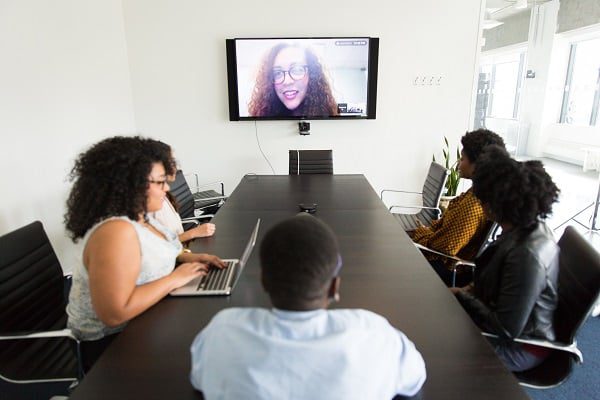Onboarding is an important process for both employees and employers. It sets the tone for the new working relationship, helps newcomers feel welcomed and included, and provides a guide for expectations and responsibilities. It is no surprise that the best companies make their employees the center of everything that they do.
Northpass found out that companies with a structured onboarding experience had a 60% improvement in revenue year on year. But it wasn’t only improvements that came out of structured onboarding processes, but also a 63% improvement in customer satisfaction. Happy employees are better positioned to make customers happy. Some organizations have become champions at focusing on employees and gained a stellar reputation through either a branded or generic onboarding process.
There are many different ways to onboard new employees, but some methods are more successful than others. It is important to find one that fits your company culture and that provides new employees with all the information they need to be successful.
In this blog post, we’ll take a look at three examples of the best employee onboarding processes to learn from. Each of these organizations has figured out how to make their onboarding process efficient, effective, and welcoming for new employees. Read on to find out what makes their onboarding programs so special!
What Is Employee Onboarding?

Employee onboarding is the process of introducing new employees to the organization, their job responsibilities, and company culture. It helps them transition into their new role and feels comfortable in their new environment. The goal of employee onboarding is to help new hires adjust to their new job quickly and effectively so that they can be productive and contribute to the company’s success.
The best employee onboarding programs are tailored to the needs of the company and the employees. They are comprehensive and provide new hires with all the information they need to be successful in their new role. They also make sure that employees feel welcome and included in the company culture.
What Is The Best Onboarding Experience?

It may be tempting to think a great employee experience consists of a fancy tech stack, an app, or even lots of social activities and perks. Yes, these are all good for providing the best employee onboarding experience, but using them as a tactic won’t cut it. The best employee processes are memorable and motivating. Onboarding should be a two-way experience in which the company learns about you as well as you about the company. One of the easiest ways to make onboarding personal is to use ideas such as an online knowledge hub. Making videos on various onboarding topics, company information and key role instructions will help the new employee catch up on information fast and right when they need it. With tl;dv, you do not have to make these videos anytime a new employee joins your organization. Simply let the various stakeholders record their videos on tl;dv and they will be hosted there for any new employee to access and acquire all that they need whenever they need it without higher-ups or managers having to take time off to train them. With AI time tracking, you can also gain visibility into how new hires spend their time, helping to optimize the onboarding journey for both productivity and balance. It should be planned, well-executed and dynamic. This will save time, and free managers and their teammates to socialize and get to know the team members instead of spending precious time in long hours of meetings and training.
3 Examples Of Good Employee Onboarding

1. GitLab
GitLab is a company that provides a web-based Git repository manager. They are known for their remote-first culture and have been named one of the Best Places to Work in 2019 by Glassdoor.
GitLab’s onboarding experience is very comprehensive. New hires receive a welcome email on their first day that includes links to all the resources they need to get started. They also have a buddy system, where each new hire is paired up with an experienced employee who can help them with any questions or concerns they have.
On their first day, new hires are given a tour of the company’s remote office and are introduced to their team. They are also given a copy of the GitLab Handbook, which contains everything they need to know about the company, from its culture and values to its policies and procedures.
2. Amazon
Amazon is a global e-commerce giant that has been named one of the Best Places to Work in 2019 by Glassdoor. Amazon’s onboarding program is called “Welcome Home” and it is designed to help new hires transition into their new role quickly and effectively.
Welcome Home begins with a two-day orientation at Amazon’s corporate headquarters in Seattle. During orientation, new hires are given an overview of the company and its culture, and they are introduced to their team. They are also given a tour of the campus and are given a chance to meet other Amazon employees.
After orientation, new hires are given a week-long training program that covers everything from customer service to safety procedures. At the end of the week, they take a final exam to test their knowledge of the material covered in training.
3. Google
Google is a global tech giant that has been named one of the Best Places to Work in 2019 by Glassdoor. Google’s onboarding program is called “Google Launchpad” and it is designed to help new hires transition into their new role quickly and effectively.
Launchpad begins with a two-day orientation at Google’s corporate headquarters in Mountain View, California. During orientation, new hires are given an overview of the company and its culture, and they are introduced to their team. They are also given a tour of the campus and are given a chance to meet other Google employees.
After orientation, new hires are given a week-long training program that covers everything from customer service to safety procedures. At the end of the week, they take a final exam to test their knowledge of the material covered in training.
What Makes A Great Employee Onboarding? (Virtual Onboarding Ideas)

1. Communication and technology
Are you ensuring remote employees have the right technology and communication tools they need? Software for virtual meetings, such as Donut, can be used to schedule catch-up meetings, social activities, and file sharing such as Google Drive, Dropbox, Onedrive, and documentation tools such as Notion and Google Docs.
2. Stay connected
Does the company have a system in place to allow remote employees to keep in touch with their colleagues? It could include team calls or regular check-ins. Slack is perfect for checking up and when you need to send the occasional tutorial or short video message, just tl;dv it and have them respond in their own time. It isn’t just good for async communications but takes off the pressure that goes with onboarding providing a more psychologically soothing experience for new hires.
To help your new employees culturally adapt, you can introduce powerful systems like mentors, coaching, and buddy systems. If the communication is formalized, they will be more open to communicating with these people. Zavvy is an excellent tool that automates employee management. It also streamlines your buddy system so that it doesn’t place undue pressure on other employees, such as mentors, coaches, and coworkers.
It’s a great idea to hold catch-up sessions. Donut allows you to create an automated schedule for all catch-up sessions. This will save you the effort of manually sending out invites and performing related tasks every session.
3. Take into account preferences
Be sure to consider the preferences and needs of your current team members and your new employees when creating your onboarding experience. There are no two employees the same and it can be difficult to get to know someone in just a few days.
To speed up employee onboarding, it is important to know the basic preferences of your employees. Which time zone do they reside in? What effect will their time zones have on the work dynamics of them and their team? Are they more comfortable with meetings that are synchronous or live? Are they able to make changes or integrate with existing systems? They might be more introverted and prefer async (then tl;dv could be part of your communication, training, and onboarding stack), only when absolutely necessary. These might seem like personal questions, and that would be right. But onboarding is not just about the company and its objectives. Employees are humans and every company that hopes to succeed needs to acknowledge the fact and use it well to motivate new employees. Understanding the dynamics of your new hire will help you better welcome them into your culture.
You can learn more about your clients, such as their hobbies and favorite things, to help you create a personalized gift and make them feel more at ease. With this information, you can create an effective and comprehensive plan to help them be their best.
4. Additional Resources
Are there any other resources you can offer remote employees? Online training materials, onboarding checklists, and handbooks are all possible options. It doesn’t matter what situation it might be, remote employees need to have all the information they need in order to succeed in their new job.
The GitLab Handbook is a great example of a perfect employee handbook. It is 2400 pages in length and contains all the information an employee at GitLab would need. The role of the employee will determine the resources they need, such as customer history or information.
To give them a time machine of events, recordings made with tl;dv could be shared. They would be able to access all organizational learnings and build a solid understanding of the system. The tl;dv could be used as an employee learning center. It contains pre-recorded sessions and screen sharing that show employees how to do things.
These videos can be accessed on demand so employees can review them whenever they need to refresh their knowledge. Employees can skip parts of videos they already know and concentrate on what is most important at the time with the transcripts and timestamps.
5. Check-ins
You should have a plan for regular remote employee check-ins with Donut. This could be done via video conferencing with Zoom, Happy Hour, phone conversations, or chats through Slack. This will ensure that everyone is on the exact same page and that any issues or concerns are resolved as quickly as possible.
To discuss the new role and other details, the employee should meet with their manager. After they have been approved by HR, the manager should meet with the new employee to set the direction of the rest. Managers should establish the plan for follow-ups, and agree to a follow-up plan with new employees. These catchup meetings should be held in the first two weeks, four weeks, and in two months’ time. This allows the manager to keep track of progress and helps them understand how the company operates.
These meetings should include the first meeting where the new employee is made aware of his/her KPIs, OKRs, and how they will be measured, including progress in assimilating into the company. Notion could host a list of mandatory onboarding training sessions with checkmarks so that employees can review each one after they have completed them. Buffer does a good job of keeping all important documentation and instructions for onboarding on Notion. The company has operated fully remote since its founding. There are also tools such as Trello to track progress and Zavvy to manage employees.
When it comes to doing a job right, execution is king. Videos on how to get the most results, tips, tactics, and strategies for getting things done faster and better could be recorded by the best employees or managers using tl;dv for all others to learn from, including new employees. This knowledge hub will save them tons of time, stress, and frustration and put them on a ready pedestal to succeed in your company. The icing on the cake is that they get to learn at their own pace, and when they need to without having to set up time-sucking meetings again.
6. Feedback
Lastly, you should solicit feedback from both your remote employees as well as your existing team members during the onboarding process. This will help you identify any areas that require improvement and adjust your remote onboarding checklist.
Conclusion
By following these steps, you can create the best employee onboarding experience for your remote employees. You need to focus on the individual and not just the process. With the help of technology like tl;dv, Donut, and slack, you can make sure that every new employee in your company is set up for success.





